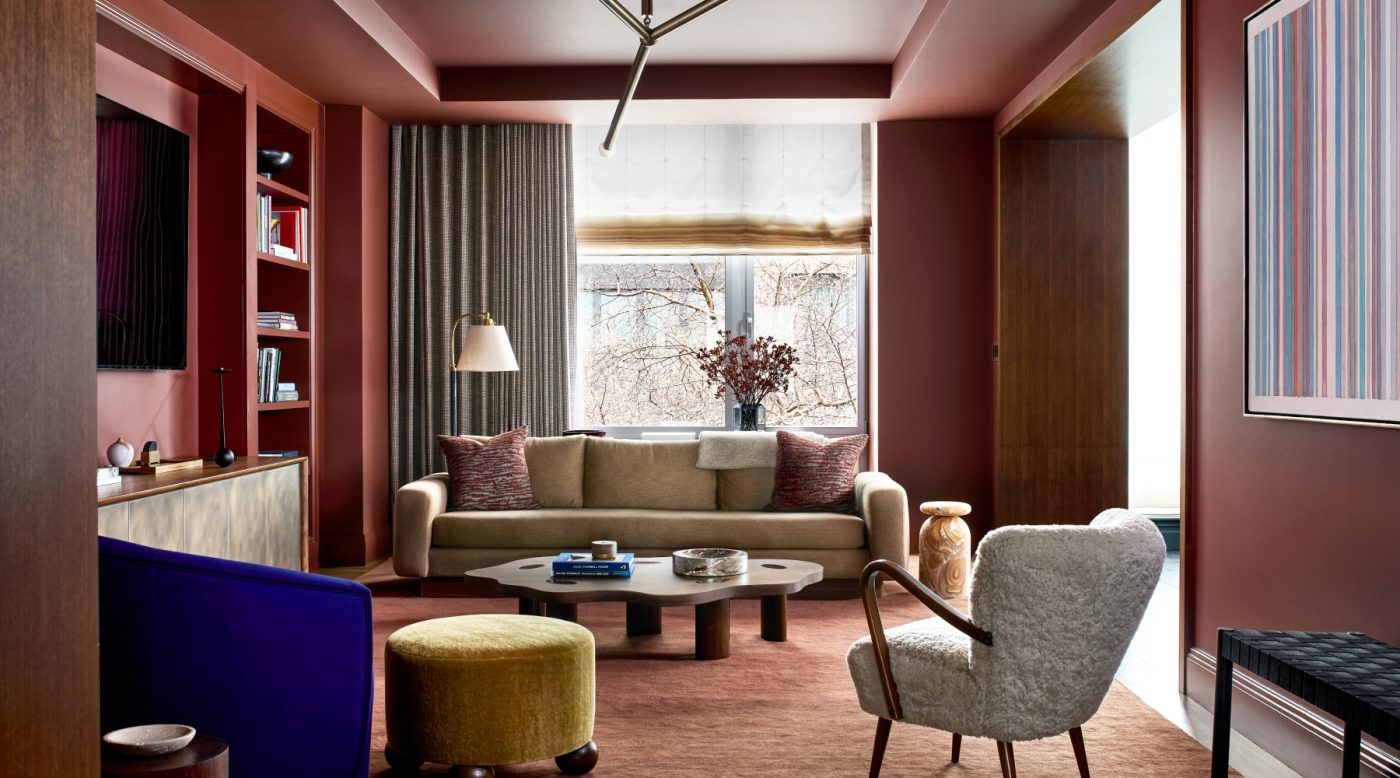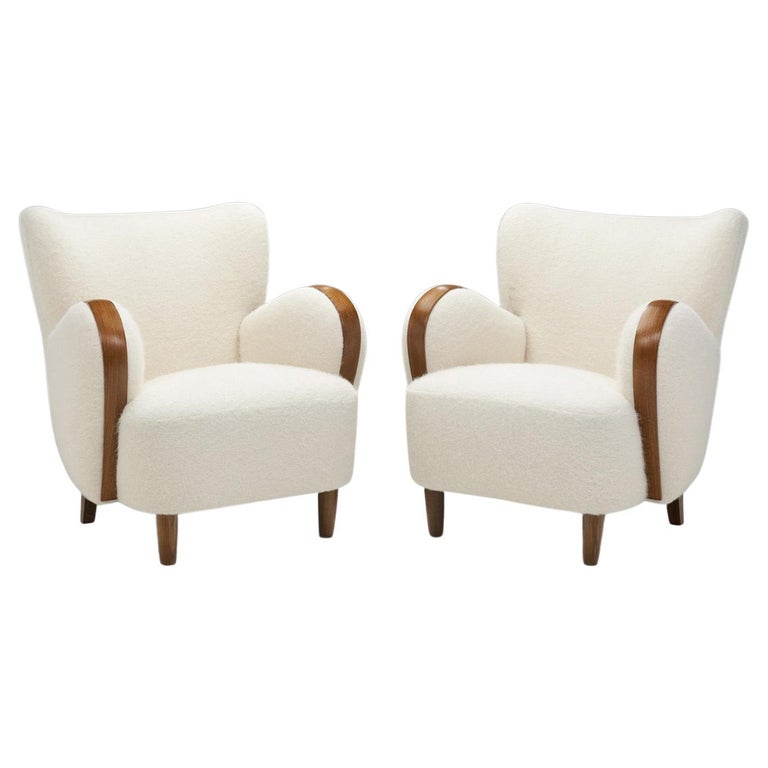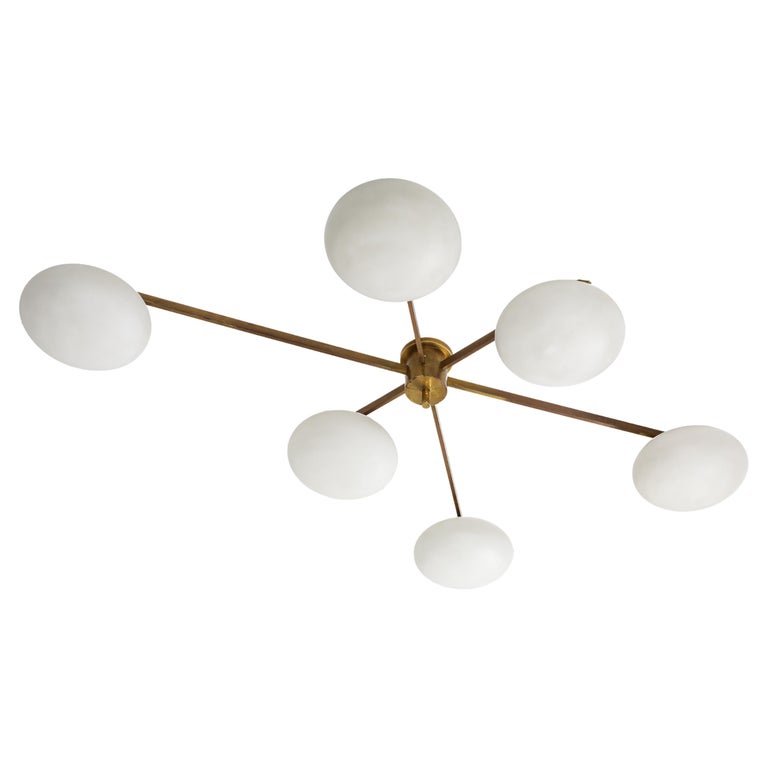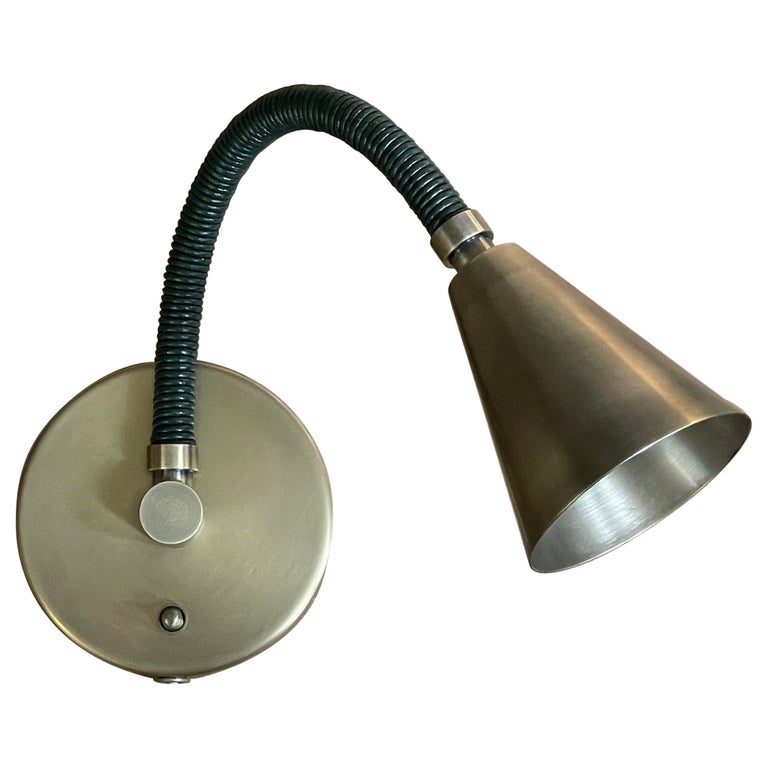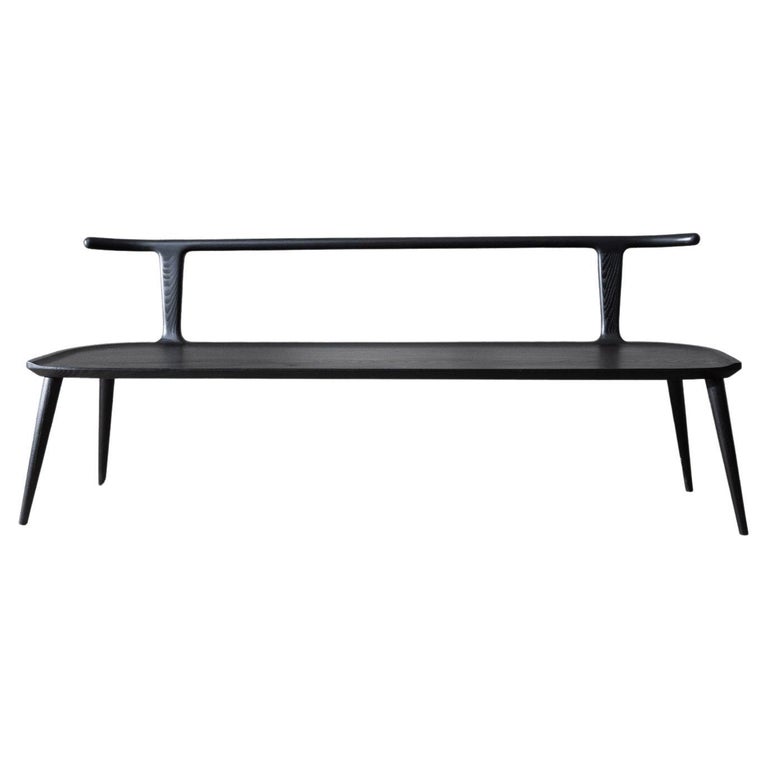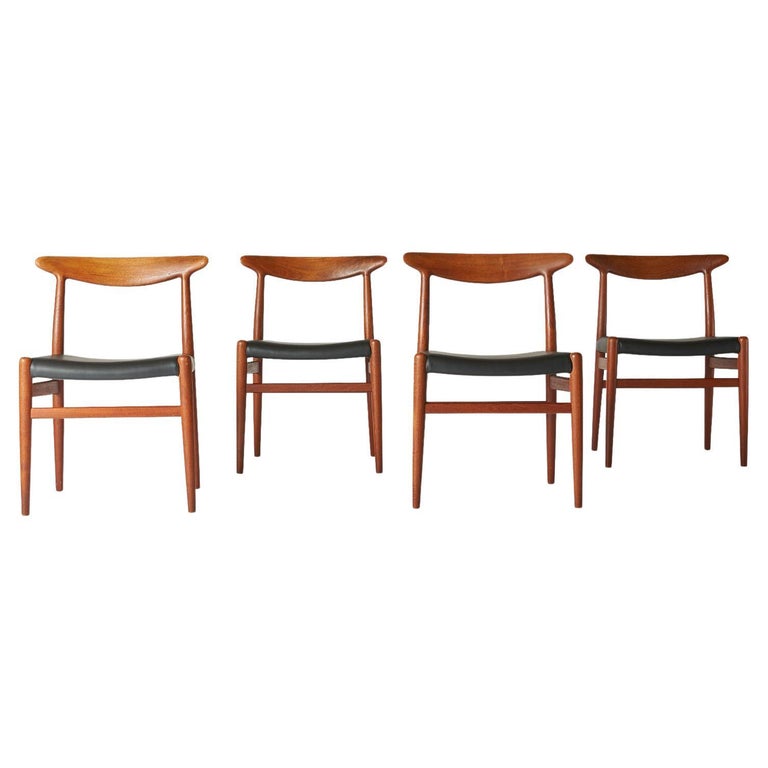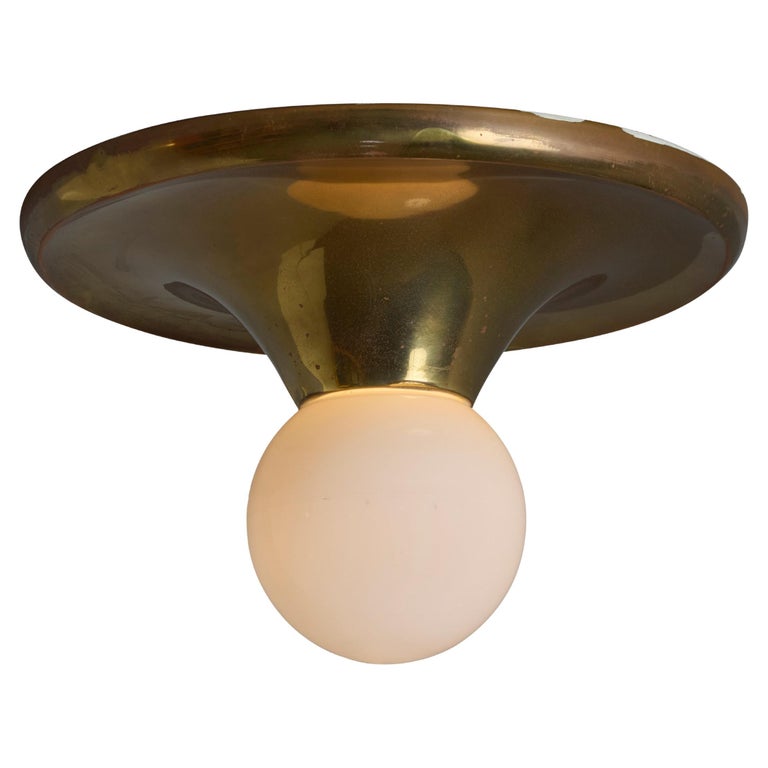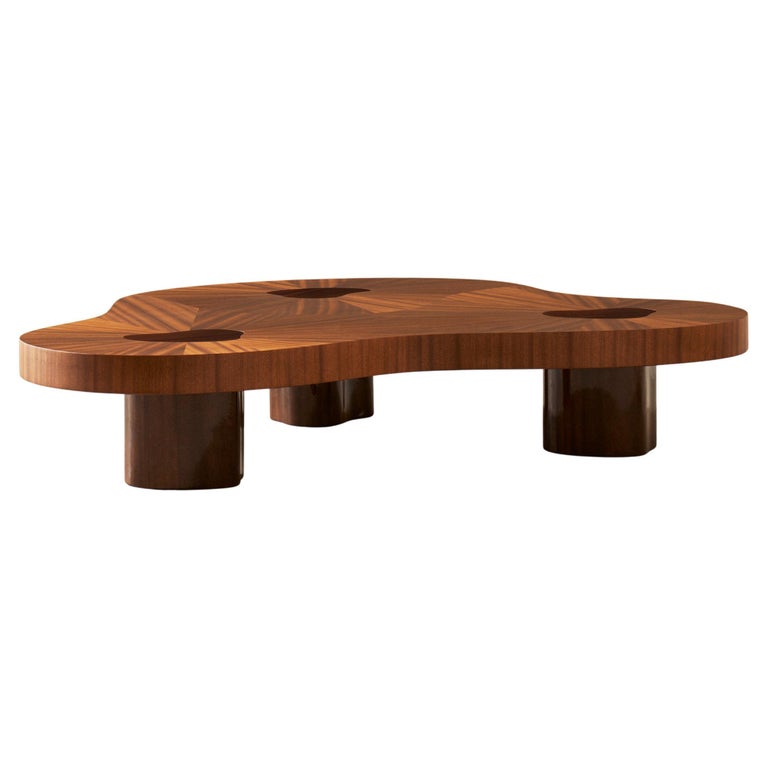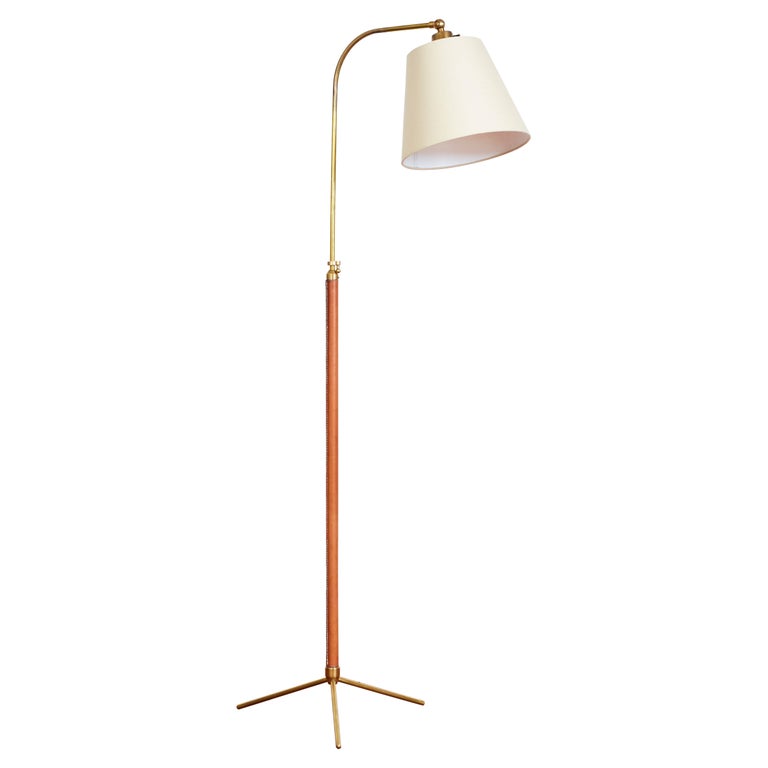June 22, 2025For a certain set of Washington, DC, devotees, few things are more covetable than a pied-à-terre in Georgetown. And yet, when the new owners of this apartment met with their designer — local talent Zoë Feldman, a member of this year’s 1stDibs 50 — all agreed: Something was missing. Actually, a few somethings, and pretty big ones, too.
The clients, Feldman explains, “knew it wasn’t ideal. You weren’t walking into a perfect Parisian apartment.”
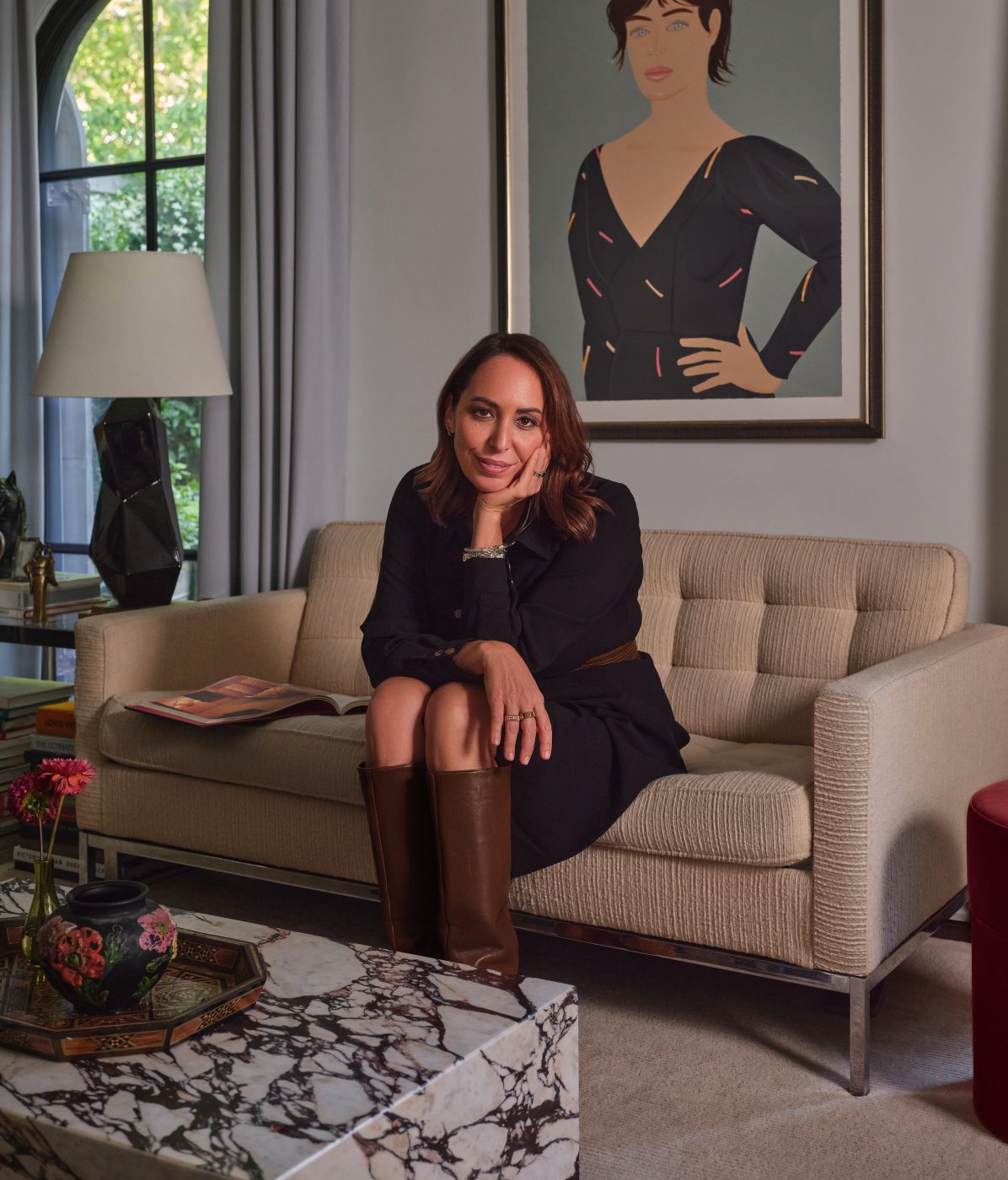
“Architecturally, it was challenged,” Feldman says, recalling what she thought of the home during her first visit and noting its lack of warmth and character. Built in the 1990s, it felt “a little McMansion-y, unrestrained. It was fancy but in a way that was fancy without any real design integrity.”
None of this, however, deterred Feldman from taking on the commission. “When you walk into a space that needs your help, it’s a little more exciting than it would be otherwise,” she says. “I knew we could infuse some really great architectural details to fix it so it would look the way it always should have.”
The clients — a West Coast husband and wife who planned to use the penthouse when in town for business, family visits and Georgetown basketball games —wanted something easy, comfortable and ready for entertaining groups, mostly of the husband’s friends, as well as plenty of TV-oriented space for watching sports.

Based on this brief, Feldman worked in a vernacular that’s “a little more masculine than our typical work,” she says, noting that the clients also “liked our use of color and wanted to play with that.” The husband’s style tended toward the spare and modern, but they also recognized the value of creating an interior that would harmonize with the traditional aesthetics of their Georgetown surroundings.
Feldman made sure the apartment conveyed all that from the get-go. She had the foyer’s walls accented with moldings that create the appearance of classical paneling, then had the room painted Farrow & Ball’s deeply verdant Carriage Green hue and hung a scalloped-glass ceiling pendant light overhead. Amid this, she inserted a mid-century modern-inspired built-in vanity within an alcove, cladding both the alcove and the vanity in a richly grained, honey-hued walnut that appears in many areas of the home.
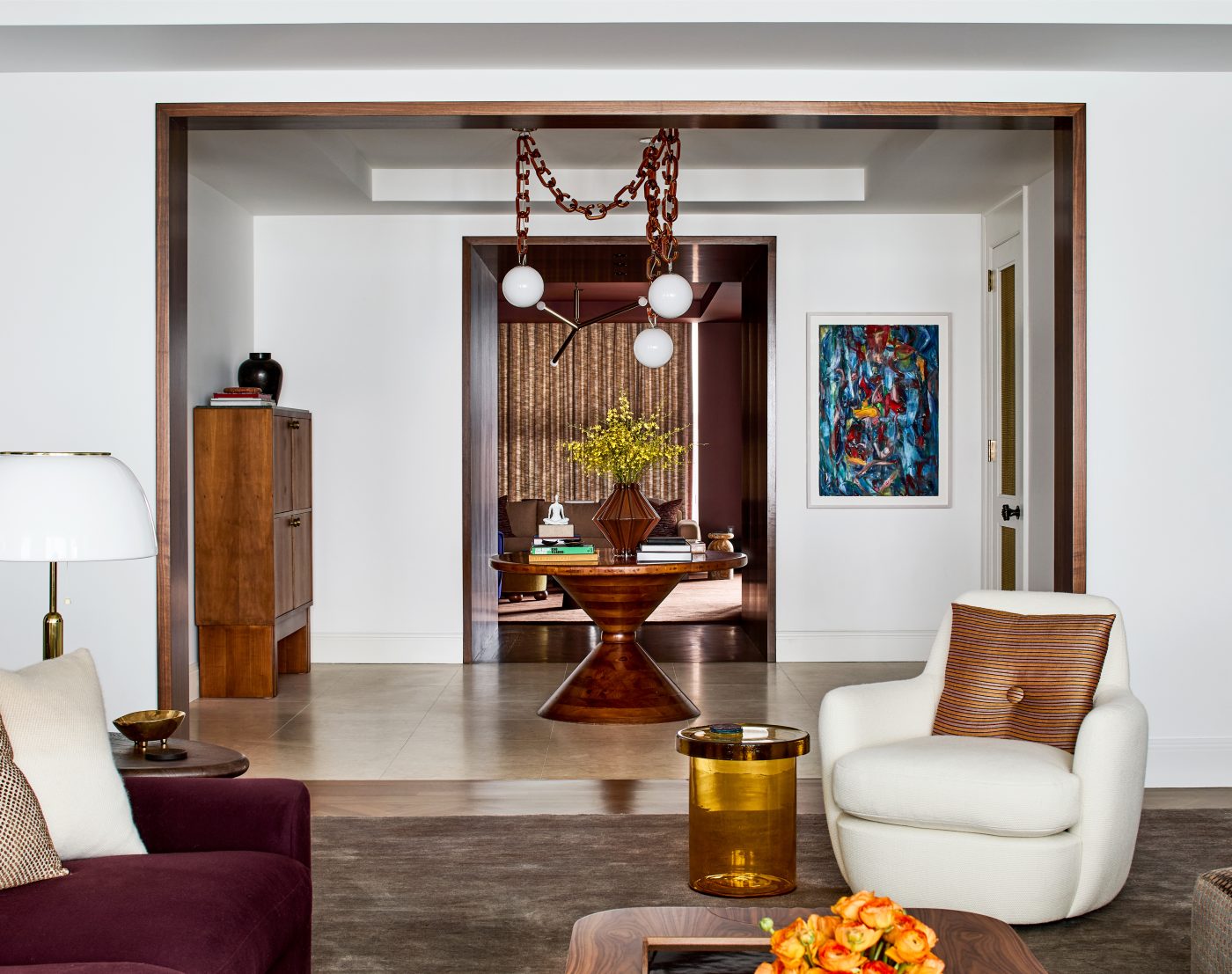
“We used the wood in certain nooks and for all the door jambs, to create a thread throughout the architecture,” the designer says of the smooth, clean-lined millwork. “It adds interest, and it modernizes things.”
The green foyer leads to a white-walled gallery whose furnishings evidence a simplicity of form and palette that felt true to the owners’ modern aesthetic and allowed the art hung on the walls to shine. The space centers on a sculptural circa-1960 mahogany marquetry table with a base formed by two cones stacked point-to-point. “I wanted to use vintage pieces to provide warmth,” Feldman says, pointing to the home’s mostly Italian finds.
A contemporary pendant light fixture made of chain-linked glass elements drapes from the ceiling above the table. “I love this light — it feels rock-star fun,” she says, noting that it can also hold its own with the Sabine Moritz painting displayed nearby.
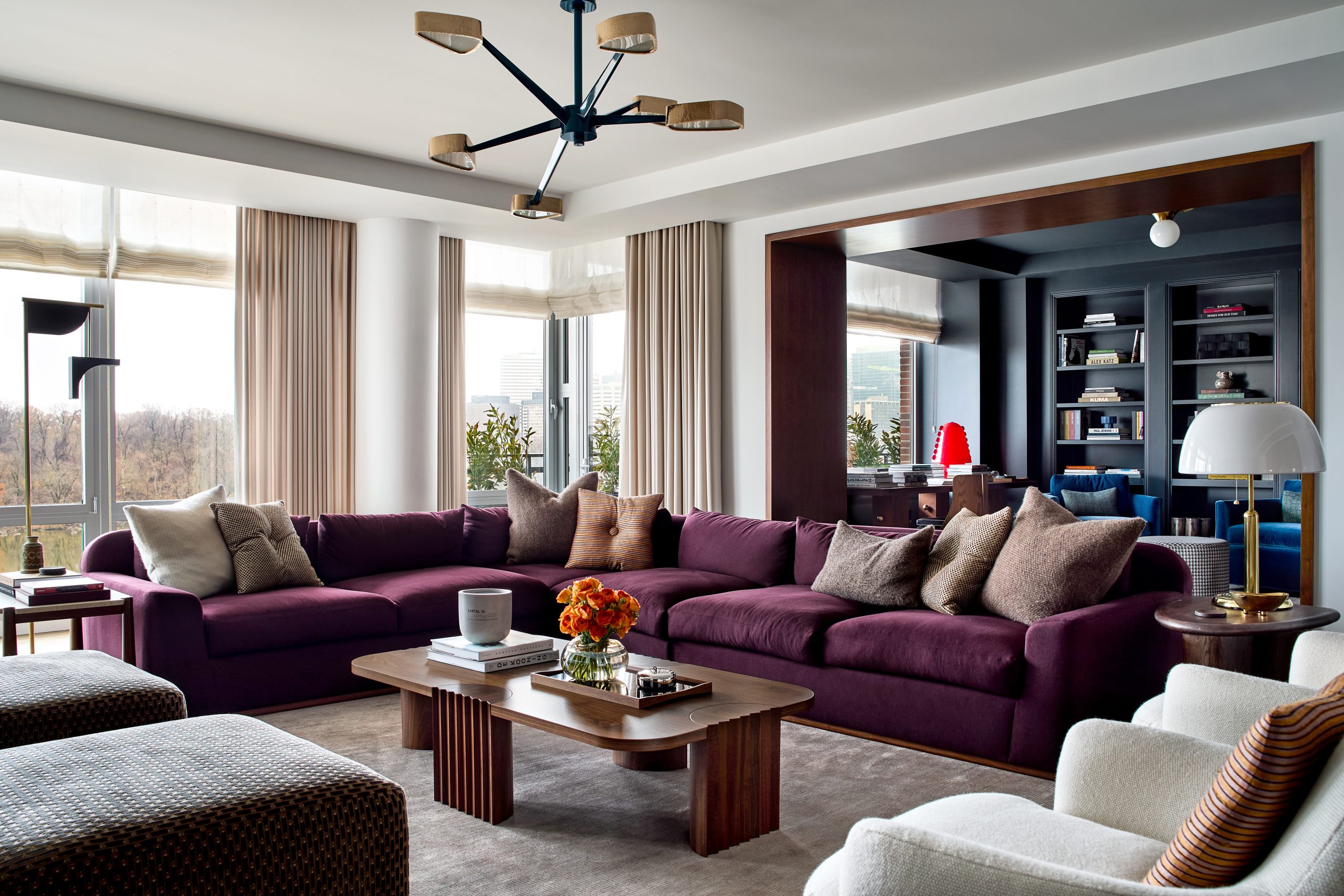
From the gallery, one can head into a den finished with warm terracotta walls or pass through a deep walnut portal into the living room, which, like the gallery, is largely light in tone. This is connected by another walnut-cased portal to a dark gray office.
“We always do a color story to help us figure where we’re going to be dense with hue and where we’ll give a reprieve,” Feldman explains, referring to the room-by-room digital mood boards she and her team create to establish the pacing of a project’s palette.
The designer anchored the living room with a commodious sectional upholstered in a port-hued Schumacher wool. “We wanted something in a deep color,” she says, “so it wouldn’t be destroyed” — the room mostly gets used for relatively raucous groups of friends watching sports — “and because we were keeping everything else pretty quiet.
“I always like to consider what the star moment will be in a space, and this sofa is definitely it here.”
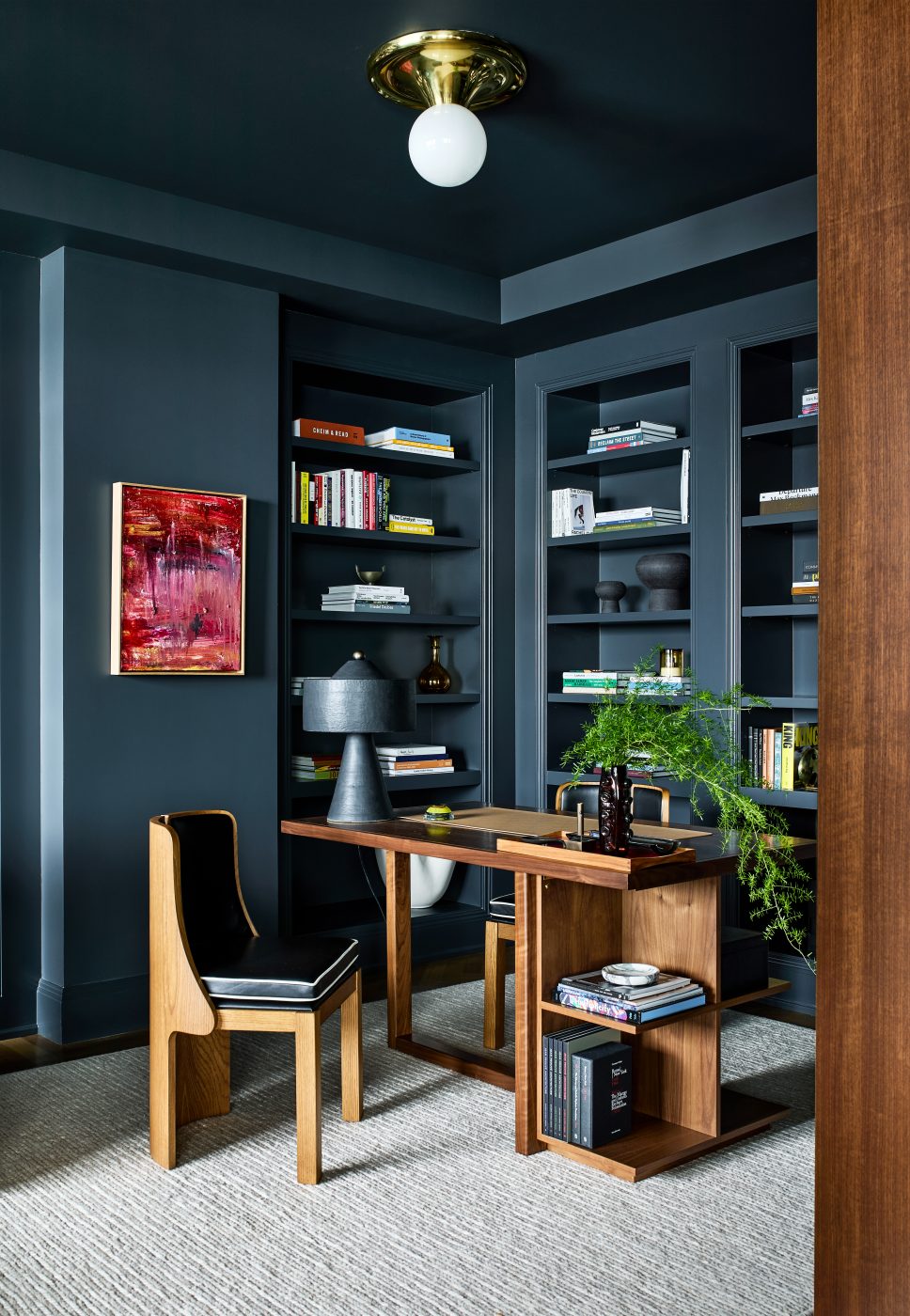
For supporting players in the living room — which affords views of the Potomac River, Kennedy Center and the Georgetown waterfront — Feldman selected an Art Deco–inspired Achille Salvagni ceiling light and a pair of Lawson-Fenning curved swivel armchairs as well as a travertine-topped walnut side table.
The dark-gray-hued office, meanwhile, boasts a 1960s Achille and Pier Giacomo Castiglioni flush-mount globe light illuminating a modernist cantilevered desk, again from Lawson-Fenning and in walnut.
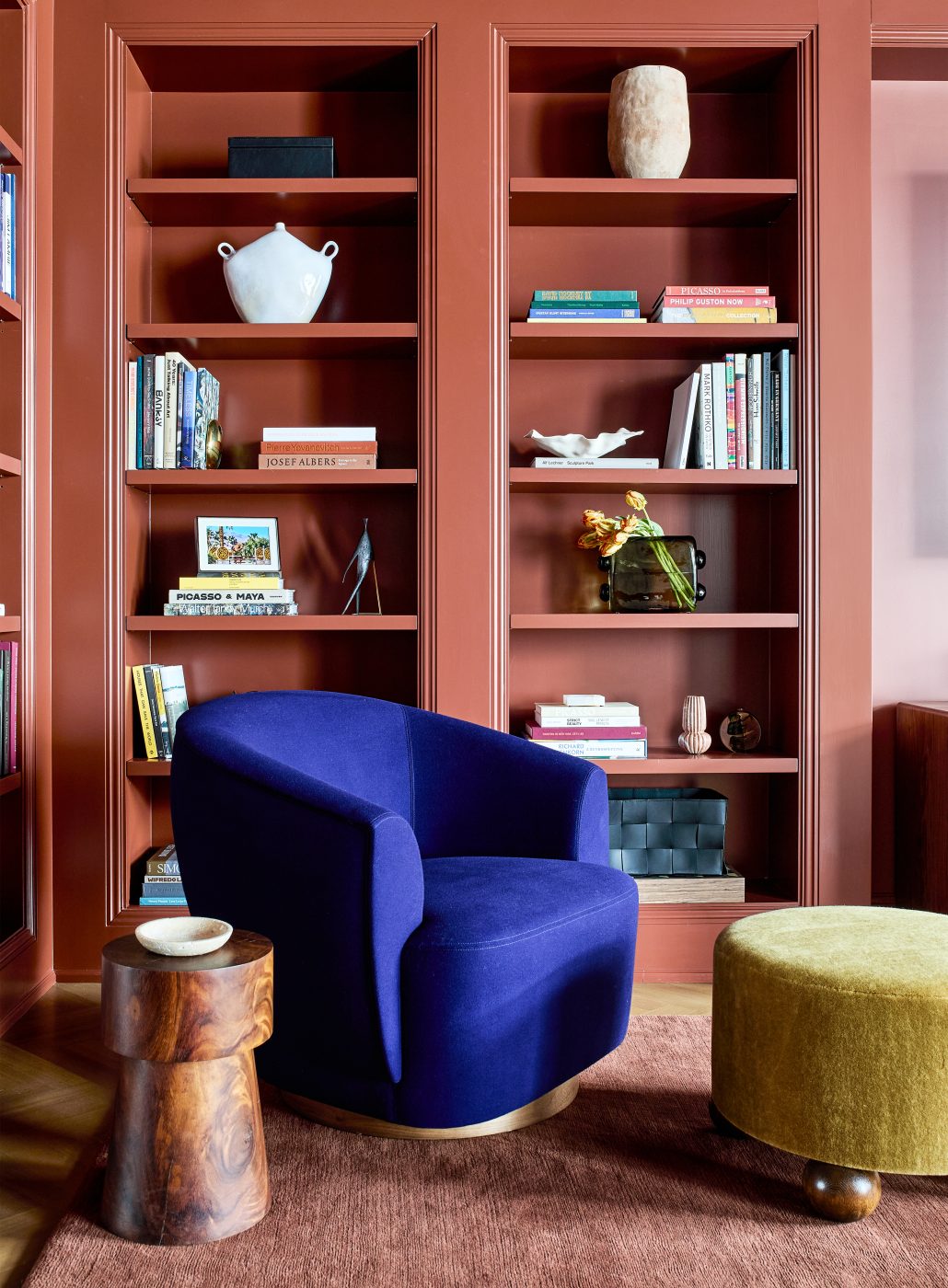
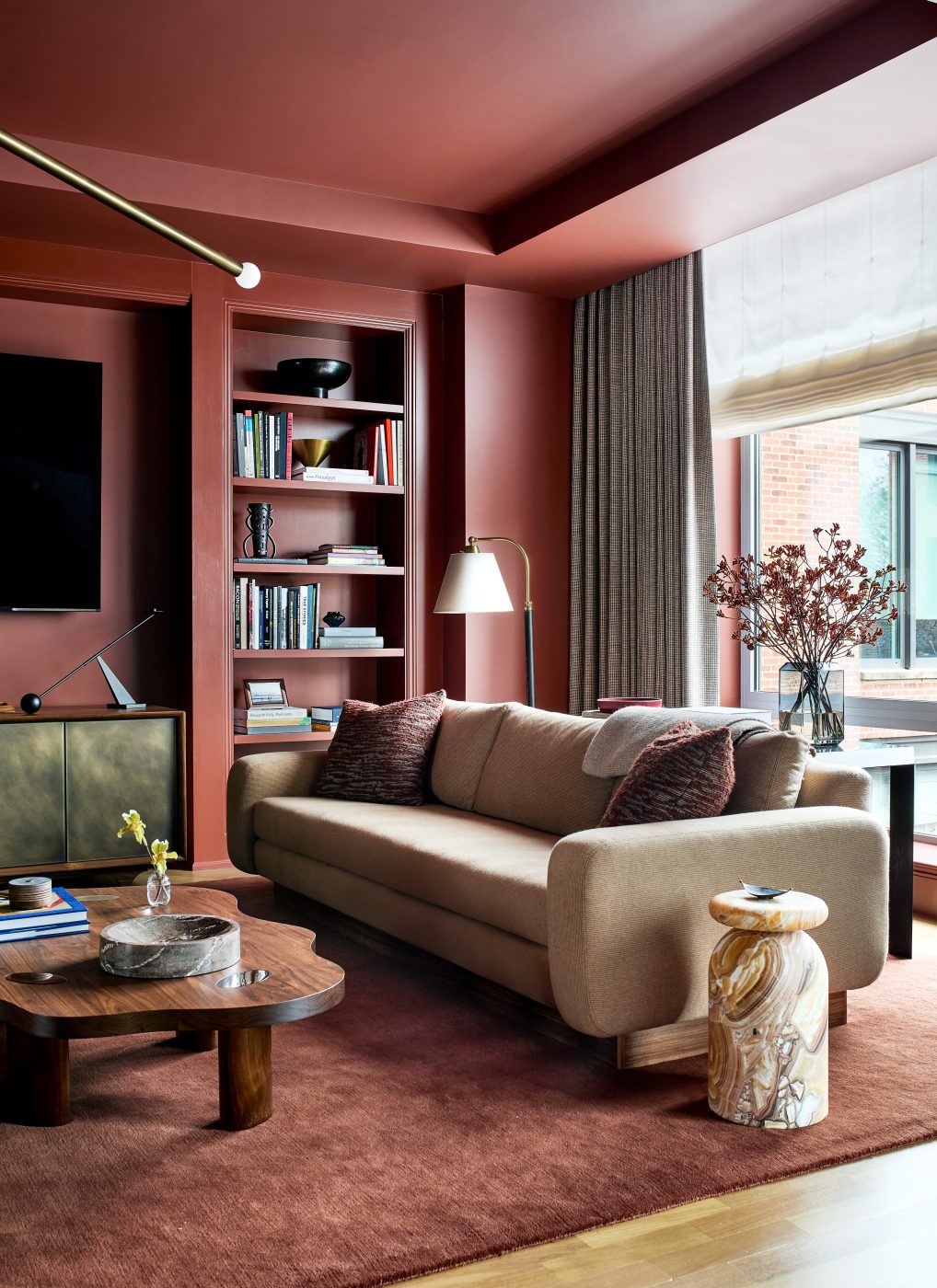
Across the gallery from the living room, the cozy den is outfitted with a Loro Piana cashmere–upholstered Lawson-Fenning sofa, an amorphously shaped walnut coffee table by Louise Liljencrantz and a mustard-hued velvet mohair Dagmar stool that all but glow under the light of a linear, three-pronged Apparatus ceiling fixture and a vintage Jacques Adnet–inspired floor lamp.
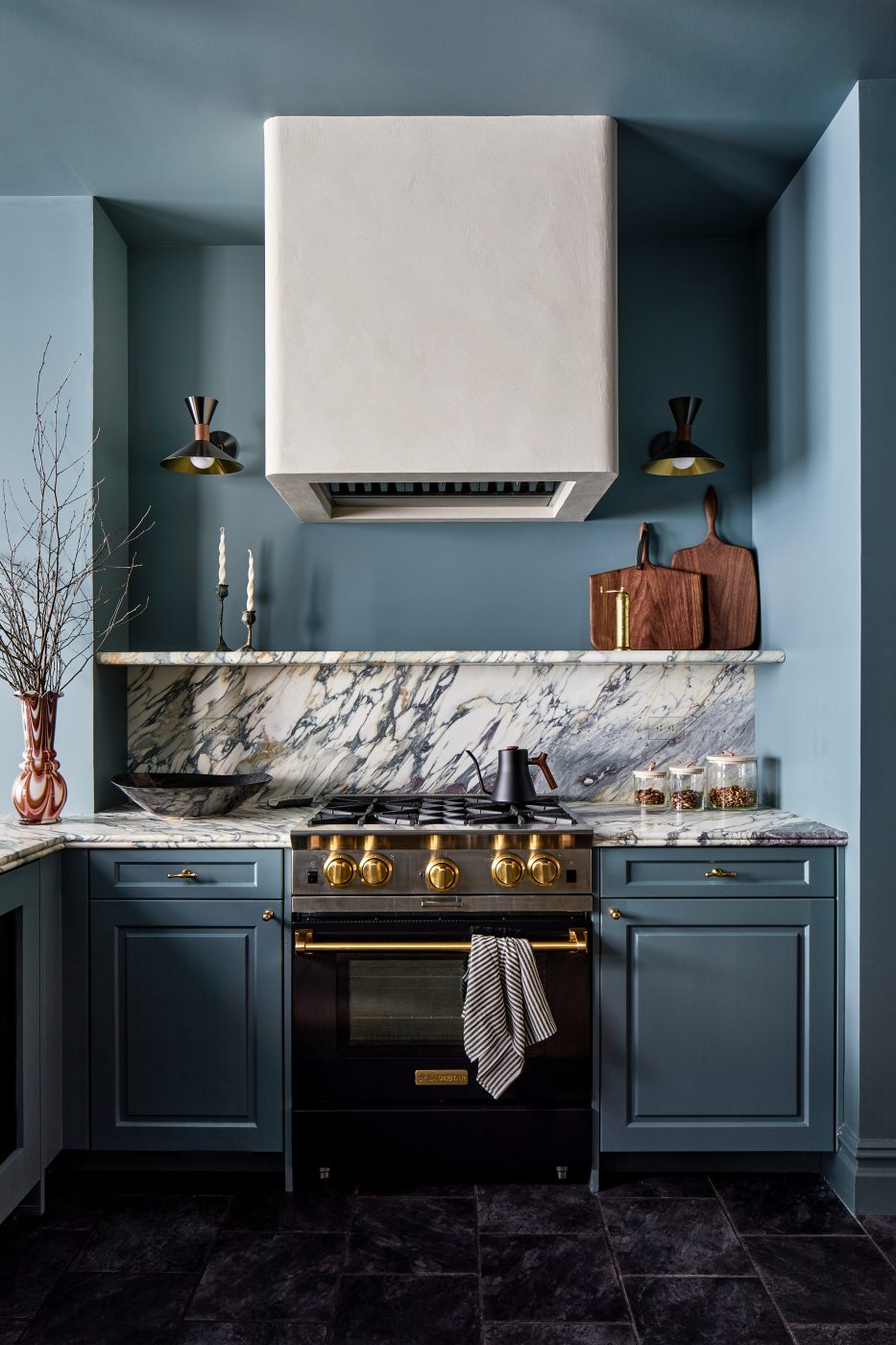
In the adjacent kitchen and dining area, Feldman added honed marble counters atop existing cabinets that she had freshly painted, like the walls, in Farrow & Ball’s De Nimes blue. She tempered this cool hue with a vintage wool rug, brass-and-wood ceiling lights from the Urban Electric Co. and a suite of eight vintage teak Johannes Andersen for Uldum Møbelfabrik chairs arranged around a simple ash Zafal dining table from Sun at Six.
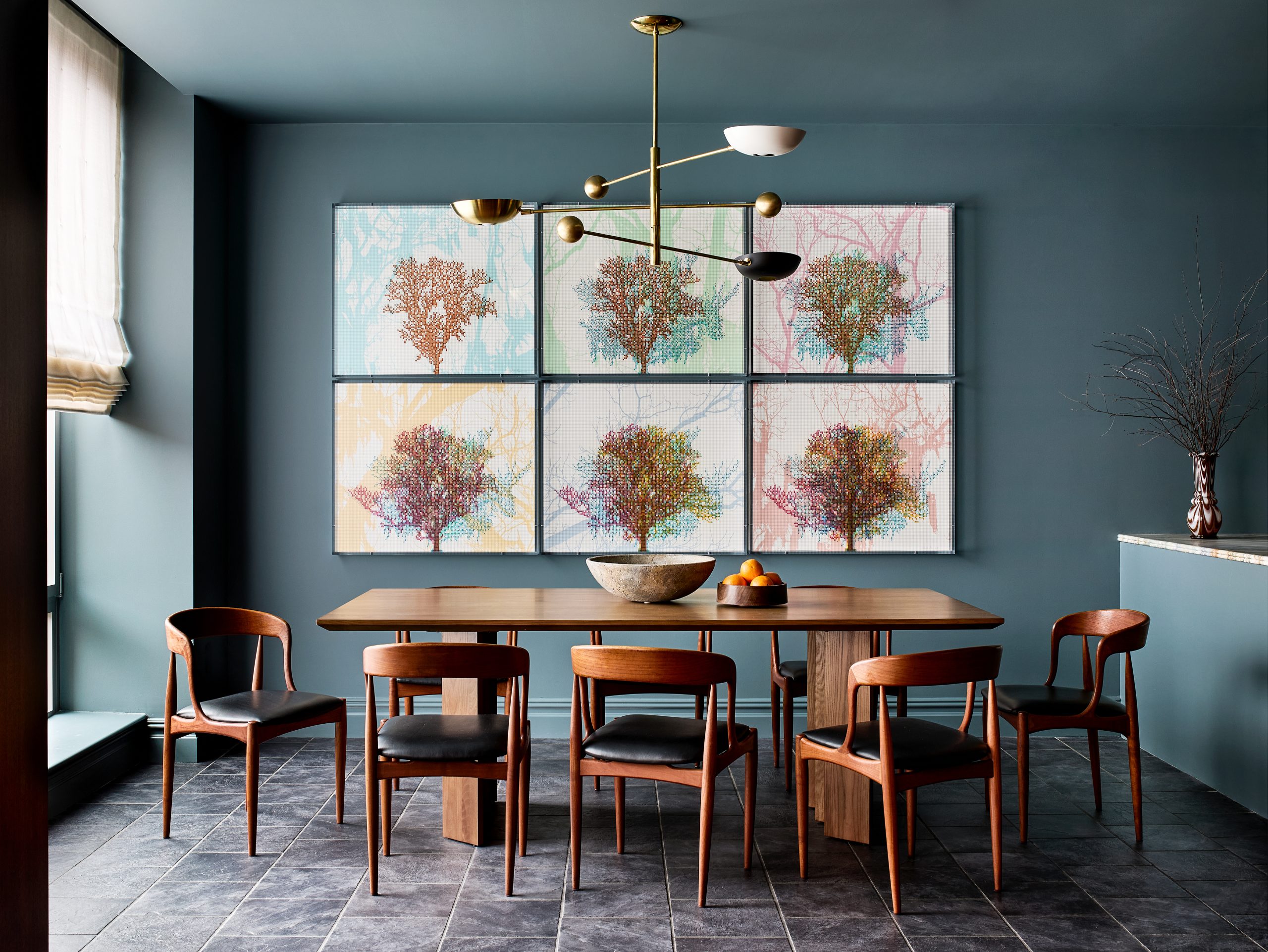
The large wall parallel to the long rectangular table shows off a set of six colorful acrylic prints of trees by Charles Gaines, a highlight from the owners’ existing art collection. “They were excited to have a big wall to display it,” says the designer. “We kept everything else simple, so the art could take center stage.”
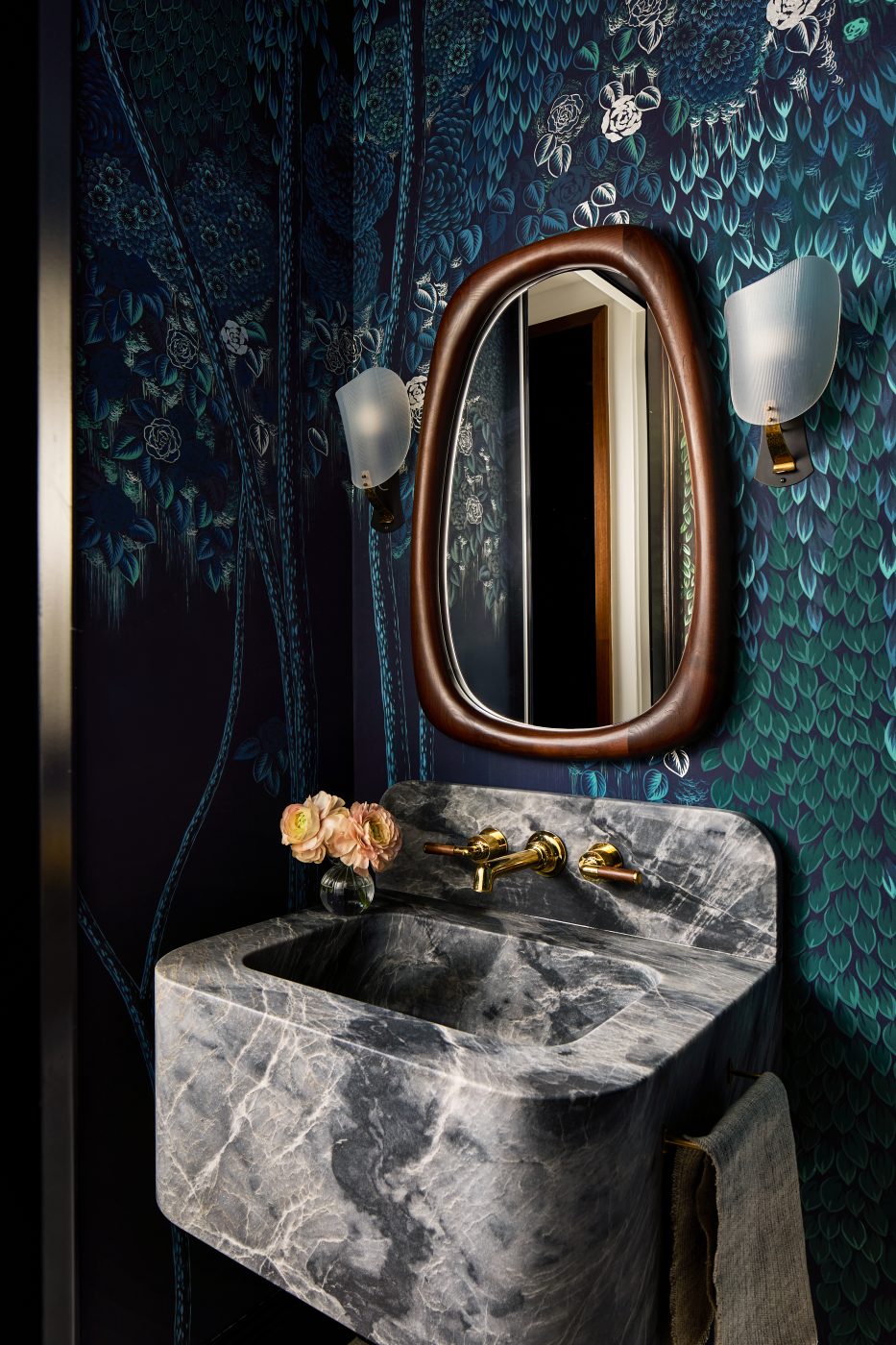
Arboreal motifs appear again in the powder room’s forested de Gournay wallpaper, while more walnut forms the frame of the primary bath’s custom mirror, mounted above a bespoke reeded vanity.
The main bedroom’s star performer is a large Angelo Lelli–inspired six-armed opaline-glass ceiling light. It joins a custom upholstered bed covered in a Loro Piana cashmere and vintage furniture, including Danish rosewood-and-teak nightstands and Milo Baughman lounge chairs.
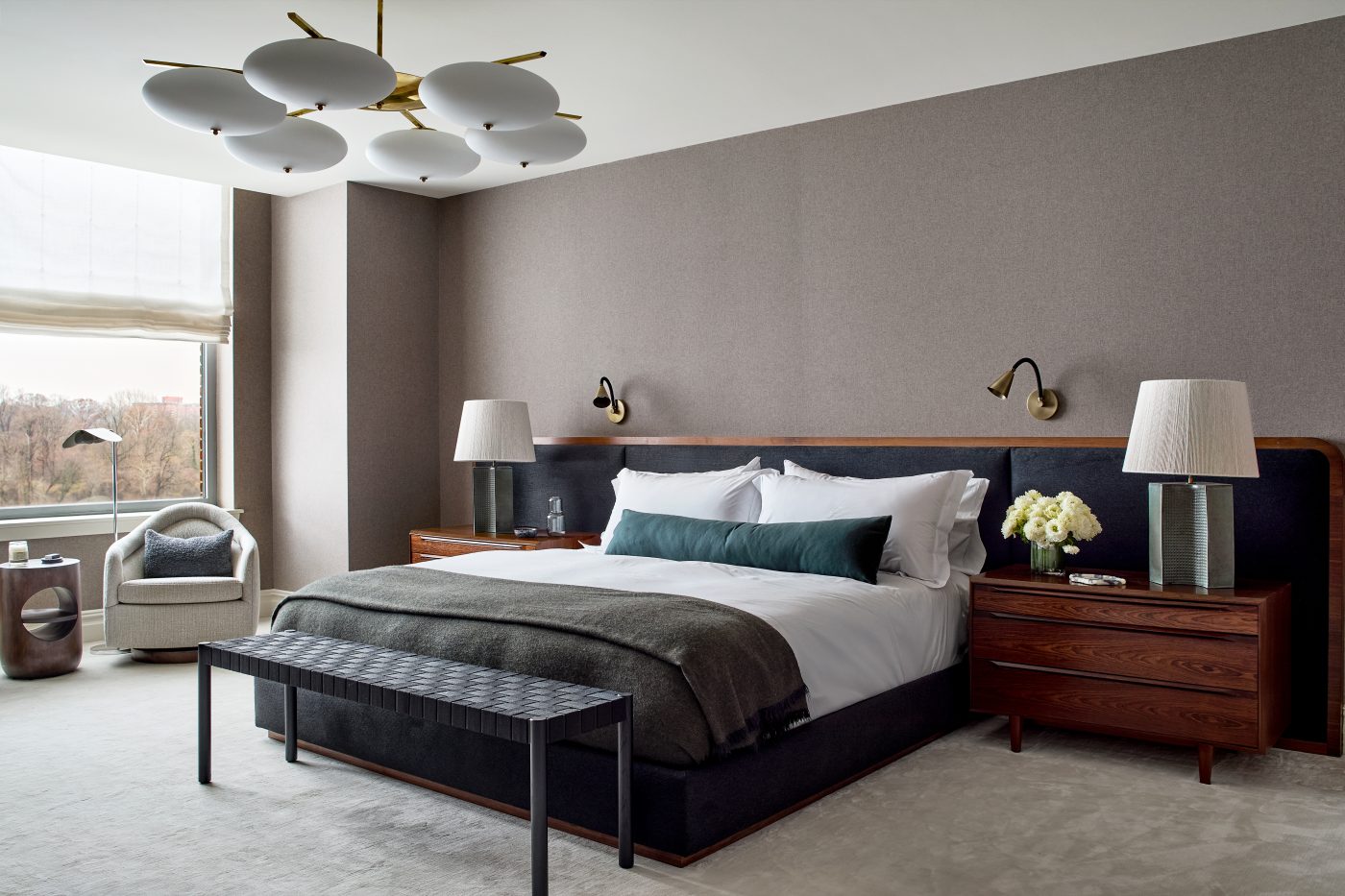
“The clients,” Feldman explains, “wanted it to feel very quiet and soothing, serene and ethereal,” an effect furthered by walls upholstered in a Schumacher wool.
In any project, she says, “we come in to understand the needs of the building and of the clients, and then we help the homeowners achieve the best possible outcome by helping them to find their aesthetic way.
“Here, we just had to kick the McMansion away.”
